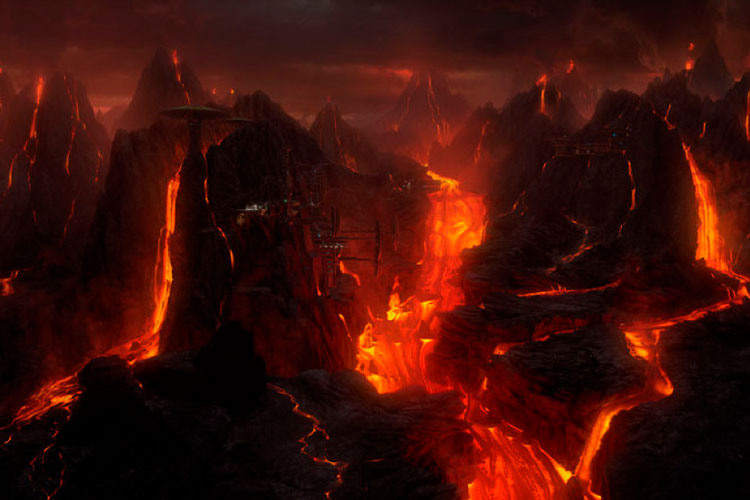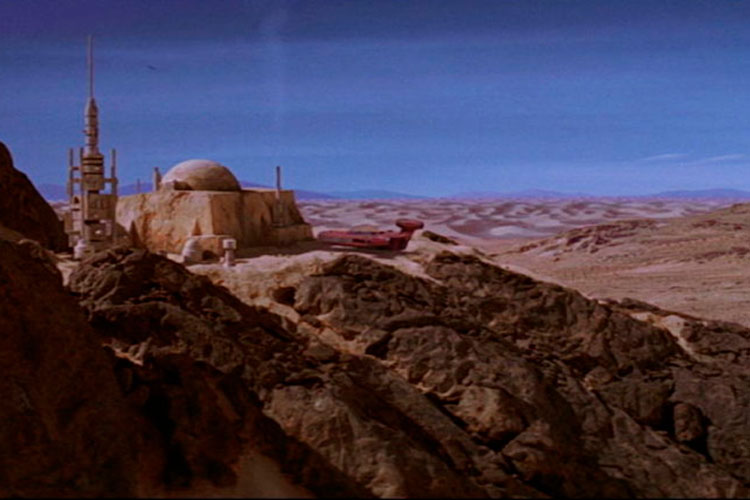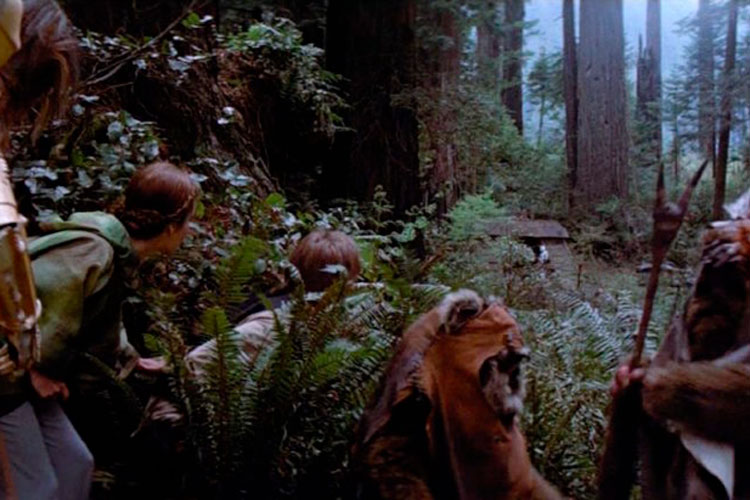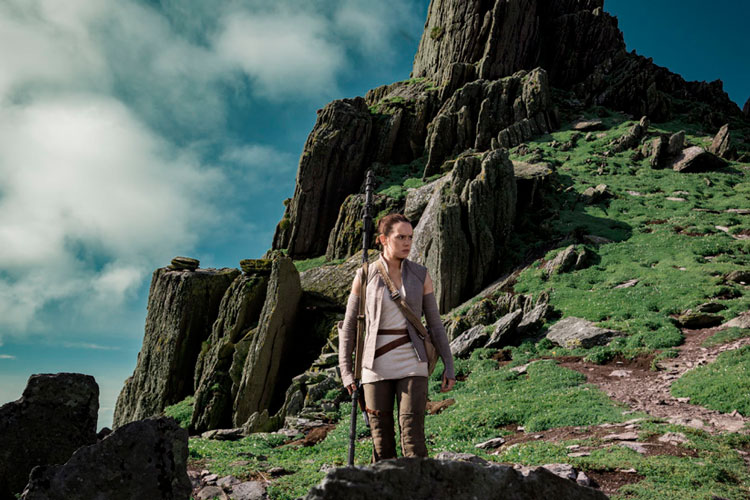“A long time ago in a galaxy far, far away…”
With its allure of a quest story, this line from Star Wars has captured the imaginations of millions of minds across the globe. Because at the very heart of it, Star Wars is a quest story. Whether it be Luke Skywalker from the original trilogy, Anakin Skywalker from the prequels, or Rey from the new trilogy, all Star Wars characters struggle with their personality, their fears and their role in society. And although these characters have lightsabers and many other powers, Star Wars characters are essentially just like we are.
So, is Star Wars really in a galaxy far, far away?
No. It is not. Star Wars is right here, and not only metaphorically, but literally. Just as the figurative conflicts and joys of the Star Wars characters resound firmly within the human heart, the planets pictured in Star Wars are shot on Earth. Want to visit them in real life? Here’s a guide for you to do so – no spaceship required!
1. Naboo

Naboo, Star Wars | via www.starwars.com
Where you can visit it: Royal Palace of Caserta in Caserta, Italy, and La Plaza de España in Sevilla, Spain.
The Royal Palace of Caserta, in Italian, the Reggia di Caserta, is one of the largest 18th century palaces in Europe, designed for the Bourbon kings of Naples, and served as the Naboo Theed Royal Palace in The Phantom Menace and The Attack of the Clones.
La Plaza de España was built for the 1929 World Fair, called the Ibero-American Exposition of 1929, and was filmed as the city of Theed in Star Wars.
Why you should go: Naboo is arguably one of the most beautiful locations in the Star Wars films. Filmed primarily in the Royal Palace of Caserta in Caserta, Italy, and La Plaza de España in Sevilla, Spain, Naboo represents a time of peace and gentle prosperity. Symbolically, Naboo is the perfect world, resting in democracy and a keen liking to the natural wonders and the arts. However, part of its lesson is that even an idyllic planet such as Naboo can fall prey to evil, as Naboo’s Senator Palpatine, who eventually became the dark lord Darth Sidious, conquered all peaceful republics under his Empire, including Naboo. Although this may seem like a dreary message, Naboo was also the home of diplomat and Queen Amidala, wife to Anakin Skywalker and mother to Luke and Leia. Episodes IV to VIII regale viewers with the tales of Luke, Jedi master, and Leia, royal princess and diplomat, as they fight to restore peace to the galaxy. Thus, to the plot of Star Wars, Naboo also represents the heritage of peaceful diplomacy and strong leadership that Leia embodies later in the series.
2. Mustafar

Mustafar, Star Wars | via www.starwars.com
Where you can visit it: Italy’s Mount Etna, Europe’s most active volcano. A surprise to be sure, but a welcome one at that, Mustafar is not actually a hundred-percent computer-generated planet. Rather, it is a composition of different shots of Italy’s Mount Etna. Specifically, Etna is a stratovolcano, meaning it was built up through many years of lava and volcanic ash deposits, and is located between the cities of Messina and Catania, off the east coast of Sicily.
Why you should go: Mustafar is not particularly subtle when it comes to the dark overtones it represents. The black sky, mixed with its toxic atmosphere, burned soil, and deadly lava, are strong indicators of the inherent evil of the planet. For Mustafar is the location where the last remnant of good in Anakin Skywalker is burnt to a char, to be replaced with the black heart of Darth Vader.
3. Tatooine

Tatooine, Star Wars | via www.starwars.com
Where you can visit it: Tatooine was shot in several locations in Tunisia as well as Death Valley, California. Particularly, Death Valley was used to film any scenes requiring Tatooine’s flat desert or canyon to be portrayed, whereas Tunisia was used to film Tatooine’s spaceport, village, and even Obi-Wan’s home.
Why you should go: There could never be Star Wars without Tatooine. Tatooine is the twin-sun home planet of both Anakin and Luke Skywalker, and the place both begin their journeys as Jedi. It is a dreary desert planet devoid of water and comfort, a poor civilization where the ordinary person does not have rights or freedom. Despite having a relatively negative rapport, it cannot be forgotten that it serves as the home of both Luke and Anakin, and as such represents how, given their poverty and difficult life, both characters managed to rise and join the galaxy’s most respected tier: the Jedi. Thus, though Tatooine depicts a harsh life, it represents hope, its most famous scene being in, surprise, surprise, A New Hope, when Luke looks off to the sunset before embarking on his great quest to restore balance to the Force.
4. Endor

Endor, Star Wars | via www.starwars.com
Where you can visit it: Filmed in the Redwood National and State Parks of Northern California, Endor oversees the Empire’s Stormtroopers, with their large machines and precise weapons, face the Rebellion’s remaining soldiers alongside the teddy-bear-like Ewoks, who quite literally fight with nothing but sticks and stones.
Why you should go:Endor’s story is particularly important to us today. Endor is one of the final battles in Return of the Jedi in the Star Wars saga, and represents the final victory of good over evil. But, at the end of the day, good does triumph evil, so the difference between the Empire’s high-tech gadgetry and the Rebellion’s primitive forces proved minimal. A possible social commentary? One does not necessarily need the best and newest of equipment to be successful, and oftentimes it is better to take a step back from technology and appreciate the Earth, or even just one’s surroundings. Endor is one of the densest forests in Star Wars, teeming with wildlife and tall trees, and represents the connection to nature the Ewoks have. They know their land and home well, and use this knowledge to help the Rebellion take down the dangerous AT-ST walkers (the chicken-like mounted walkers). So, to both the Star Wars plot and life on Earth, technology is not always perfect, and sometimes it is best to take a step back and appreciate nature.
5. Ahch-To

Anch-To, Star Wars | via www.starwars.com
Where you can visit it: Ahch-To was filmed on the Great Skellig Island in County Kerry, Ireland, and is home to the ruins of an ancient Gaelic Christian monastery which was deemed a UNESCO World Heritage Site in 1996. The island is uninhabited and mysterious, but very peaceful and serene, a befitting location for the origins of the Jedi. And their end.
Why you should go: Ahch-To is one of the most pristine lands in Star Wars. It was the planet where the Jedi Order was first founded, and the place where Luke Skywalker chose to stay after exiling himself from the rest of civilization and the Resistance (what the Rebellion is called in the new trilogy). In Star Wars Episode VIII, The Last Jedi, the Jedi Order finally comes to an end with the joining of Luke Skywalker with the Force. But the parallels between Great Skellig island and Ahch-To run quite deep. The Great Skellig Island is a spiritual island, containing the ruined monastery, yet is uninhabited and devoid of human life. Similarly, Ahch-To strongly contains both sides of the spiritual Force, yet is uninhabited save for Luke and the caretakers. But in The Last Jedi, the purpose of Ahch-To is to represent the end of the journey for Luke, and to usher in a new era of heroes. Symbolically, the way Luke stares out into the sunset of Ahch-To after Force-projecting himself into the duel against Kylo Ren is reminiscent of the way he began his path as a Jedi in Episode IV, and provides a circular and poetic closure to the life of the greatest, and last, Jedi. But the fact that the Jedi Order has come to an end does not mean that good is lost. Rather, it is the opposite. The new era of heroes, as Luke says, must feel the balance of both the light side and the dark side, not just the light, as Rey and Kylo Ren briefly exhibit fighting alongside one another. Thus, Ahch-To represents the end of one timeline, and the beloved past of Star Wars, while it reins in the franchise’s new heroes, who must grow past the Jedi and embrace a new future.

